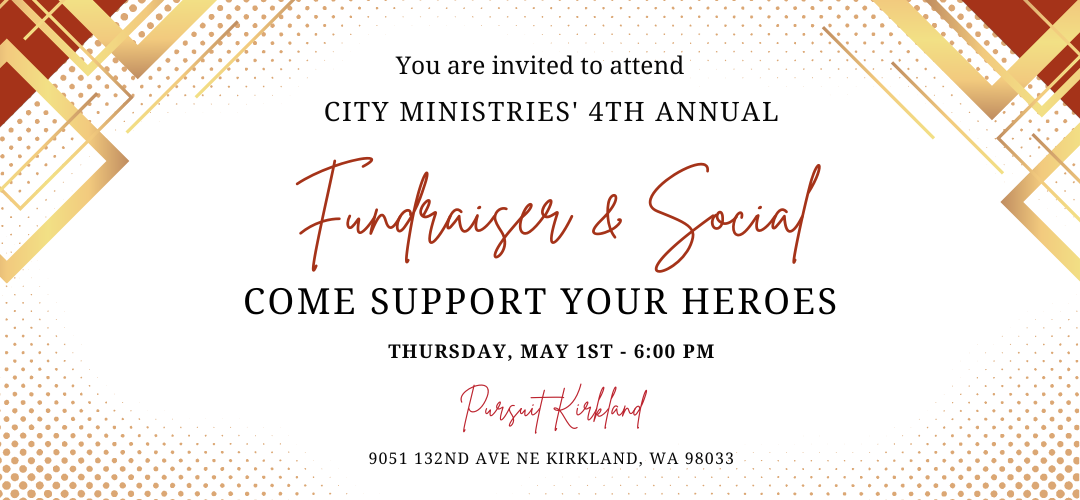As a foster parent, you’re no stranger to the epic meltdown.
Here’s what I know from my time as a foster parent-tantrums are unavoidable. Your best chance for surviving these emotional downfalls is learning some de-escalation techniques for your child’s challenging behavior.
Throughout my years as a parent, I’ve found that most meltdowns occur at the end of the day when everyone’s emotions and patience are at an all-time low. Of course, you want to be empathetic and compassionate to your foster child. Even when they’ve thrown themselves on the floor while screaming at the top of their lungs.
But your humanity gets the better of you.
You can feel your fuse getting shorter and shorter. Your patience has been all used up and the ability to de-escalate the tantrum feels impossible.
It’s okay. We’ve all been there-whether it’s with our biological children or our foster placements, it happens to us all.
It’s normal to hit a wall when it comes to handling a child’s highly intense, and sometimes irrational, behavior. Being able to de-escalate or defuse challenging behavior takes plenty of practice and patience, not to mention a few helpful tips and strategies.
Avoid getting pushed to your limit with strategies and skills that can reduce even the most monumental of meltdowns. Learning how to de-escalate a tantrum with your child allows you and your child to walk away with your self-respect intact.
Foster parenting is no easy feat, and having as many tools in your toolbox as you can is the best way to a successful placement. If you’re a foster parent looking for more support and resources, contact City Ministries Child Placement Agency today. They’ll provide you with the means to care for your foster child.
Let’s talk about why de-escalation techniques are important and should be used.
What’s the goal of de-escalation strategies?
Goal #1: Prevention
The main goal behind de-escalation techniques is preventing the child from hurting themselves or those around them. But it’s also helping you as the foster parent prevent further trauma or damage to the child during the challenging behavior.
Meltdowns will happen so we aren’t trying to prevent them. Instead, our goal as parents is to stop any more destruction to ourselves or our children.
Goal #2: Stabilize the situation
When emotions run high, it’s hard to remain calm and logical. In order to defuse the meltdown, you need to first create an environment that’s neutral.
This could include removing any items contributing to the meltdown or removing the child from the environment that’s causing the meltdown. Create a space that’s calming and safe.
Goal #3: Regain control
This doesn’t mean you’re gaining control over the child. It means you’re helping the child regain control over themselves. Depending on the age of the child this could look a little different.
If you have a younger child, it could mean reading a book together. Older children can benefit from mindful breathing1. Long exhales turn on the parasympathetic nervous system, helping the child calm down and slow their thoughts.
Goal #4: Understanding the factors involved
Meltdowns typically have a reason. Depending on the age of your foster child, that reason can look very different. An older child could have a tantrum because the visit with their biological parents stirred up some uncomfortable feelings. A younger child throws a tantrum because you put the wrong socks on.
Understanding why the tantrum happened allows you to either prevent it or prepare for it better next time.
It’s a good idea to familiarize yourself with the cycle of an escalation2. Recognizing where you and your child are in the process helps you know how to use a de-escalation technique effectively.
Now that you’ve got the end goal in mind, let’s talk about some de-escalation strategies for parents, and examples of ways you can use these techniques to minimize future meltdowns.
9 De-escalation techniques for children with difficult behavior
Don’t reason with them.
It’s impossible to be reasonable when your emotions are high and your logical brain’s nowhere to be seen. The same is true for your child. During his meltdown, the part of his brain that’s logical (the prefrontal cortex) isn’t in the driver’s seat.
Instead, their fight-or-flight response is. When this happens their brain’s overwhelmed with adrenaline and cortisol, making it impossible for them to connect with the logical part of their brain.
Reasoning with them only leads to higher and more intense emotions.
What you can do instead:
- Remind your child he’s safe
- You remain calm even if the situation has escalated
- Meet their basic needs
Don’t ask them to do anything
I know I’ve been guilty of telling my child to “calm down” or “throwing a fit isn’t going to help” when he’s in the midst of a meltdown. And does it work? Never. In fact, it usually makes him more upset, and in return, my patience decreases quicker. A lose-lose situation for sure.
That’s why this de-escalation technique is so important. When they’re operating from their fight-or-flight response, calming down or really doing anything, is next to impossible. So don’t ask them anything when they’re in this state.
What you can do instead:
- Avoid too many demands of your child in the first place because this can actually cause a meltdown
- Try to hold them or rub their back if possible
- Keep your voice calm and steady
Yelling won’t help
Speaking of keeping your voice calm and steady-no one responds well when they’re being yelled at. Yelling at your child only escalates the situation. Rather than being a safe place for your child, they see you as threatening. That’s the last thing you want when trying to de-escalate and control the situation.
Remember, your child is in fight-or-flight mode, and when they’re in this place their brain is thinking there’s a threat. Instead of raising your voice and confirming their belief there’s a threat, remain calm and let them know that they are safe.
What you can do instead:
- Reassure your child that they are safe
- Don’t yell over your child in an attempt to be heard
- Wait till they are calmed down and then speak in a peaceful manner
Validate how they feel, not how they’re acting
Even as adults we have strong emotions about certain things. It’s human nature to have emotions, and it’s okay that your child has them too. We as caregivers should never make our foster child feel bad for having strong emotions.
Letting them know that you understand how they feel validates that you accept their thoughts and emotions. We want them to know we’re on their team. We may not agree with the meltdown, but we can validate their emotions behind it.
This de-escalation technique should be used often during tantrums.
How you can validate a child:
- Say “I can understand why that would make you upset. It would make me upset too”
- Avoid using the word but after a validation
- Replace it with the word because
Give them space
Respecting personal space is something we all want and it’s something we need to be willing to give to others. This is especially important during tantrums or when emotions run high. The minute you feel like things are escalating quickly, give your child some space.
For some kids, touching, hugging, or even placing a hand on them can increase their emotional state. Unless your child is in danger, keep 3 feet between the two of you while you attempt to de-escalate and defuse the situation.
What you can do instead:
- Use validating and supportive words
- Create a calm space in your home
- Let them know it’s okay to take some time out to gather their thoughts and emotions
Keep your body language and facial expressions in check
You remember the old saying actions speak louder than words? Well, that still holds true, especially during arguments. As best as you can, remain composed during your child’s meltdown. I know how hard it is to keep calm and carry on when your 5-year-old refuses to brush his teeth, so he throws his body on the floor kicking and screaming instead.
Using this de-escalation technique forces you to be mindful of your facial expressions and body language, letting your child know that they’re safe and you can be trusted. Avoid frowning, crossing your arms, pointing a finger, or furrowing your eyebrows.
What you can do instead:
- Keep hands relaxed in front of your body
- Sit on a chair if it helps you avoid pacing
- Take deep breaths when you feel like you’re escalating
Be on the same level
No one likes to feel like they’re being talked down to. Show respect and empathy to your child and get on their level. The goal of this de-escalation technique is to let them know you’re safe and not a threat. Getting on their level is a way to connect with them while they’re feeling unsure about their safety.
If your child’s on the floor, lay beside them if it’s appropriate. Sometimes communicating when you’re not staring right into each other’s eyes is easier for a child. The most important part here is to minimize the feeling that you’re superior to them.
What you can do instead:
- Remind them they’re safe and you hear them
- Keep your voice calm and neutral
- Repeat as many times as needed that you’re on their team
Use the art of distraction
This strategy really works best when used before you hit the climax of the meltdown. Your goal is to distract the child from whatever the situation is that’s prompting the meltdown. If you’ve been a parent for any number of years, chances are you’ve mastered this technique without even realizing it.
If you’re in the car and sensing a meltdown is coming, point out the window and say “did you see that huge garbage truck go by? It was the biggest truck I’ve ever seen!” and then ask if they saw it. Another classic distraction technique is showing a funny video. It’s hard to be angry when you’re laughing.
Ways you can distract a child:
- Read a book
- Tell a funny story
- Go to a new environment if possible
Actively listen to your child
Letting your child know that you hear them and recognize their wants and needs lets them feel safe and heard. Even when your child is throwing the greatest tantrum of all time, being able to hear what their needs are goes a long way when trying to control and de-escalate a meltdown.
Learn to actively listen to your child. This means giving them your full attention, even if they’re screaming while you do it. Of course, this is a great de-escalation technique, but it should be used any time you’re talking to your child. Avoid speaking or correcting for a few moments and focus on listening attentively.
Ways you can actively listen:
- Nod your head letting them know you’re hearing what they’re saying
- Repeat back to them what you heard to confirm it’s correct
- Remove all other distractions, including other children
Meltdowns and tantrums are part of child-rearing and are pretty unavoidable.
You can, however, interrupt the challenging behavior with these de-escalation techniques. Teaching your child how to communicate and care for their emotions is an ongoing process and doesn’t happen overnight. Offer plenty of grace to yourself and your child as he grows and develops.
Getting to know your child’s triggers and sensitivities helps when trying to decrease emotional meltdowns. Avoiding these things can have a positive impact on your child’s well-being.
If you’re needing more support with your foster child, contact City Ministries Child Placement Agency today. They offer support, training, and resources to foster parents like yourself. Don’t do it alone.
Connect with them today and learn how they can best help you during your foster parenting journey.



